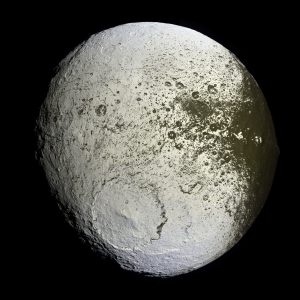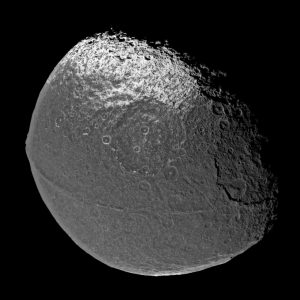
Iapetus is the third largest moon of Saturn with a mean radius of around 735 km (456 miles) – about 0.4 times the size of Earth‘s Moon.
Iapetus was discovered by Giovanni Domenico Cassini in October 1671, and it is possible to observe Iapetus through a small telescope along with Saturn’s other large moons, Titan, Rhea, Dione and Tethys.
Iapetus is composed of ice and around 20 per cent rocky materials and has an overall shape that has been described as similar to a walnut.
The surface of Iapetus is heavily cratered and has a distinctive division between a dark, slightly reddish brown surface on one side and a much lighter whitish surface on the other.
Other distinctive features of Iapetus’ surface are the particularly large impact craters known as Turgis, with a diameter of around 580 km (360 miles) and Engelier, around 500 km across (310 miles), as well as an equatorial ridge around 1,300 km (810 miles) long and 13 km (8 miles) high.
